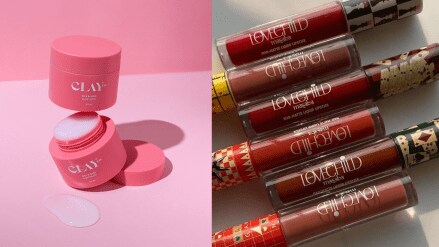Till even five years back, the choice for the Indian consumer was simple.
Cut to 2024, and the same consumer has over 600 beauty and personal care (BPC) brands and many hundred specialty products to choose from. A new generation of home-grown brands have disrupted the $31.51-billion (Statista) category in India, in the process eating away large chunks of the market from the entrenched players. Wide internet access, rising income levels and the world’s largest population of young people have helped fuel this growth.
The big daddies are not taking things lying down. A senior L’Oréal India official admitted to “facing competition” from such brands but pointed at its reach, range and R&D might as its best defence.
Earlier this month, Hindustan Unilever (HUL) revitalised its 175-year-old skin care brand Pond’s with the launch of a new line of specialised products with cutting-edge ingredients. Pratik Ved, skincare head, beauty & wellbeing, HUL, says that the new formulations are tailored to address the needs of today’s consumers and promises there will be more patented ingredients in the upcoming launches.
The battle lines seem to be drawn between legacy brands trying to protect their turf and new-age, digital-first brands working overtime to control a set of consumers who don’t seem to have a problem shelling out that extra buck for quality.
Launch, tweak, grow, repeat
So what do these homegrown upstarts bring to the table? Innovation and clever use of digital marketing channels. “They are open to experimenting. The use of influencer marketing, listening to social whispers and engaging one-on-one have helped them resonate,” says Angshuman Bhattacharya, partner & national head, consumer products and retail sector, EY Parthenon.
Experts also point out that there’s a certain consumer fatigue when it comes to harsh beauty regimens. “Many consumers just want to go back to their roots,” says Anand Ramanathan, partner and leader, consumer products & retail sector, South Asia, Deloitte. “Look at the success of brands like Kama Ayurveda and Forest Essentials. There is an appetite for natural ingredients; there’s a revival in pride in terms of looking at what was traditionally used and contemporising them.”
That said, some of the biggest accusations hurled at the booming D2C market are that they often bypass regulatory requirements and that they don’t have the wherewithal to sustain the fight over the long term. On their part, the new brands insist that new does not equal poor quality. Says Nidhi Laddha, marketing head, LoveChild By Masaba, “We are transparent when it comes to declarations, and we don’t see the rules as a deterrent to growth.” The brand works only with certified partners and has a range of quality checks at every level of production.
Vipul Gupta, founder of skincare brand Re’equil, points out that by cutting out intermediaries, it has been able to offer value-for-money products. “Our ethical practices have resonated well with people who are becoming highly conscious about the effect of their consumption on the planet.”
Indeed, brands and e-retailers are falling over each other to add clean products to their portfolio and tom-tom their ethical stance. In June 2023, for instance, the e-commerce platform Purplle launched the United Kingdom’s clean beauty brand Dr. Pawpaw’s multi-tasking lip and skin care products in India.
Just a year before that, bootstrapped ClayCo unveiled its range of products promising responsible sourcing of raw materials and packaging. “We ensure minimal use of plastic in our packaging, and most of the material we use is recyclable,” shares Niharika Jhunjhunwala, founder of ClayCo.
So there you have it. Being small, they are agile and can adapt to trends swiftly and efficiently. That’s probably the small guy’s crucial shield in a hypercompetitive market, assures Shreedha Singh, co-founder & CEO, T.A.C Ayurveda.
